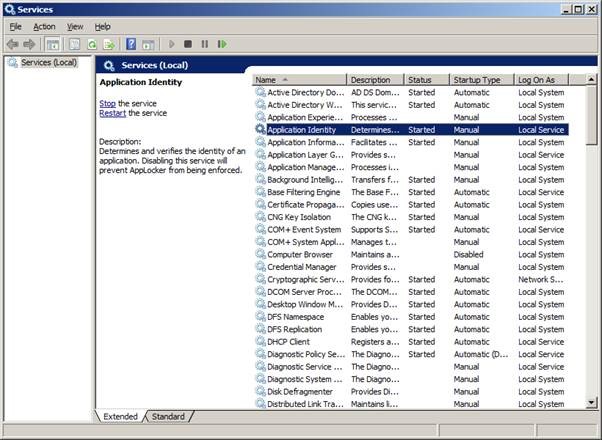

In case of Executable files, Dlls and Windows installers these attributes contain the name of the product that the file is a part of, the original name of the file as supplied by the publisher and the version number of the file. Executable files, Dlls, Windows installers, packaged apps and packaged app installers also have extended attributes, which are obtained from the binary resource. The digital signature contains information about the company that created the application (the publisher). This condition identifies an application based on its digital signature and extended attributes when available. Path: Identifies an application by its location in the file system of the computer or on the networkįile hash: Represents the system computed cryptographic hash of the identified file Publisher: Identifies an application based on its digital signature The three primary rule conditions are publisher, path, and file hash. Rule conditions are criteria that help AppLocker identify the applications to which the rule applies.
Applocker windows 8.1 how to#
To learn how to enable the DLL rule collection, see DLL rule collection. The DLL rule collection is not enabled by default. Therefore, users may experience a reduction in performance if DLL rules are used. When DLL rules are used, AppLocker must check each DLL that an application loads. If you use DLL rules, you need to create an allow rule for each DLL that is used by all of the allowed applications. Packaged apps and packaged app installers The following table lists the file formats that are included in each rule collection.

These collections give the administrator an easy way to differentiate the rules for different types of applications. The AppLocker user interface is accessed through the Microsoft Management Console (MMC), and it is organized into rule collections, which are Executable files, Scripts, Windows Installer files, Packaged apps and packaged app installers, and DLL files. When AppLocker policies from various GPOs are merged, the rules from all the GPOs are merged and the enforcement mode setting of the winning GPO is applied.įor information about GPOs and Group Policy inheritance, see the Group Policy Planning and Deployment Guide. When the AppLocker policy for a rule collection is set to Audit only, rules for that rule collection are not enforced The Audit-only enforcement mode helps you determine which applications will be affected by the policy before the policy is enforced. When a user runs an application that is affected by an AppLocker rule, the application is allowed to run and the information about the application is added to the AppLocker event log. This is the default setting which means that the rules defined here will be enforced unless a linked GPO with a higher precedence has a different value for this setting. The enforcement mode setting defined here can be overwritten by the setting derived from a linked Group Policy Object (GPO) with a higher precedence.


The three AppLocker enforcement modes are described in the following table. Run the Automatically Generate Rules Wizard ProceduresĬreate a Rule That Uses a File Hash ConditionĬreate a Rule That Uses a Publisher ConditionĬonfigure Exceptions for an AppLocker Rule This topic describes AppLocker rule types and how to work with them for your application control policies using Windows Server® 2012 and Windows® 8.
Applocker windows 8.1 windows 8#
Applies To: Windows 8.1, Windows Server 2012 R2, Windows Server 2012, Windows 8


 0 kommentar(er)
0 kommentar(er)
